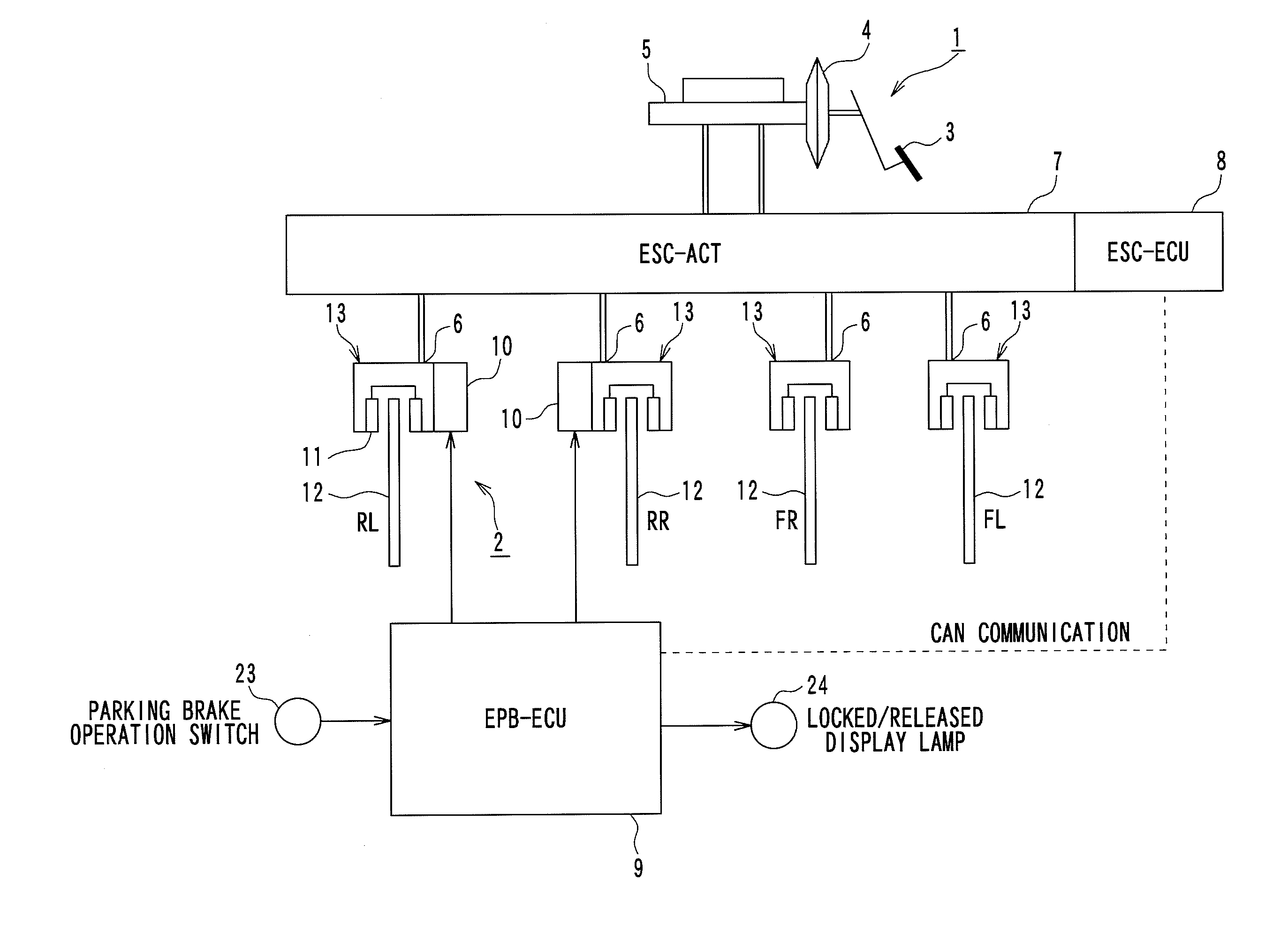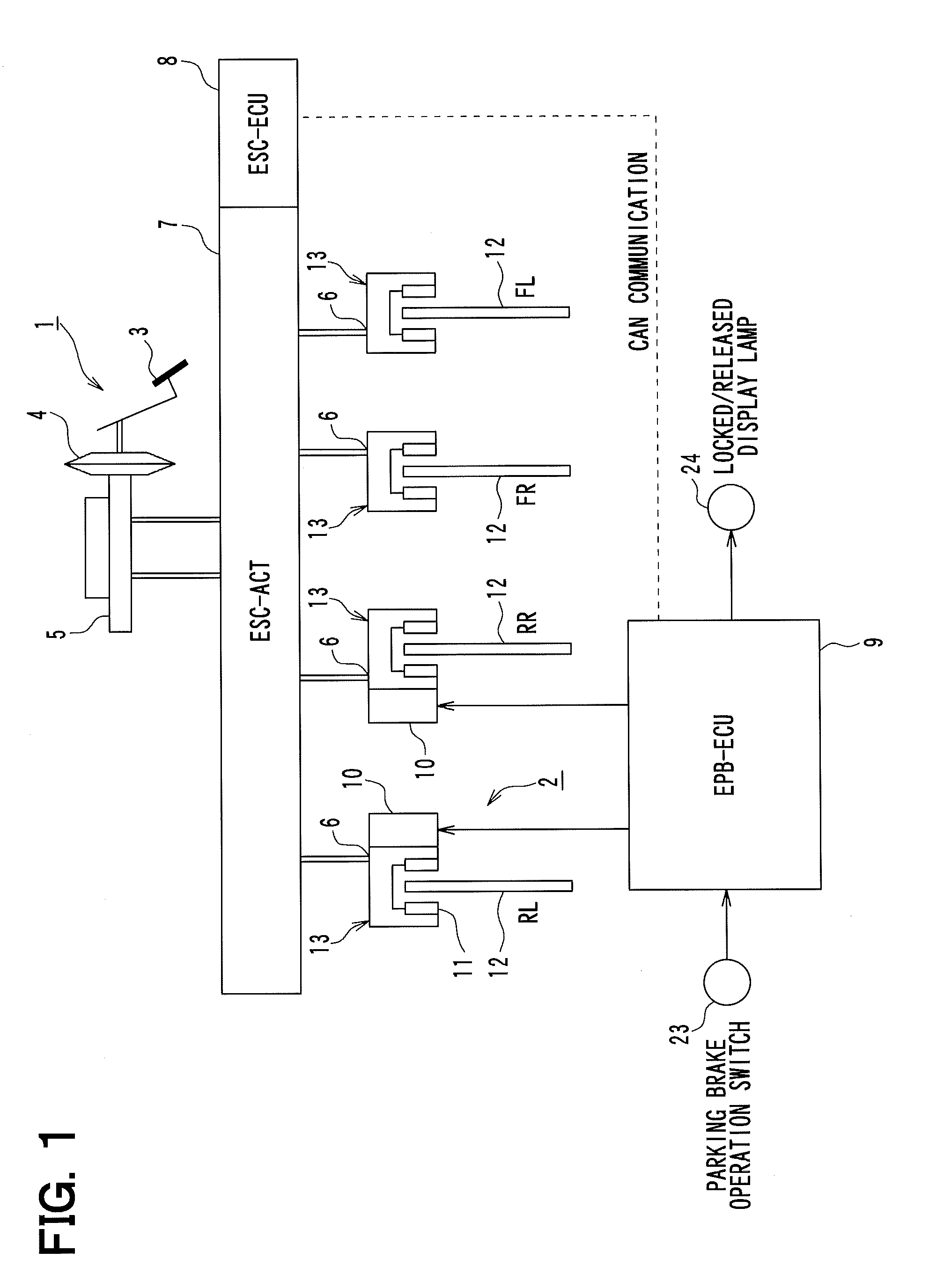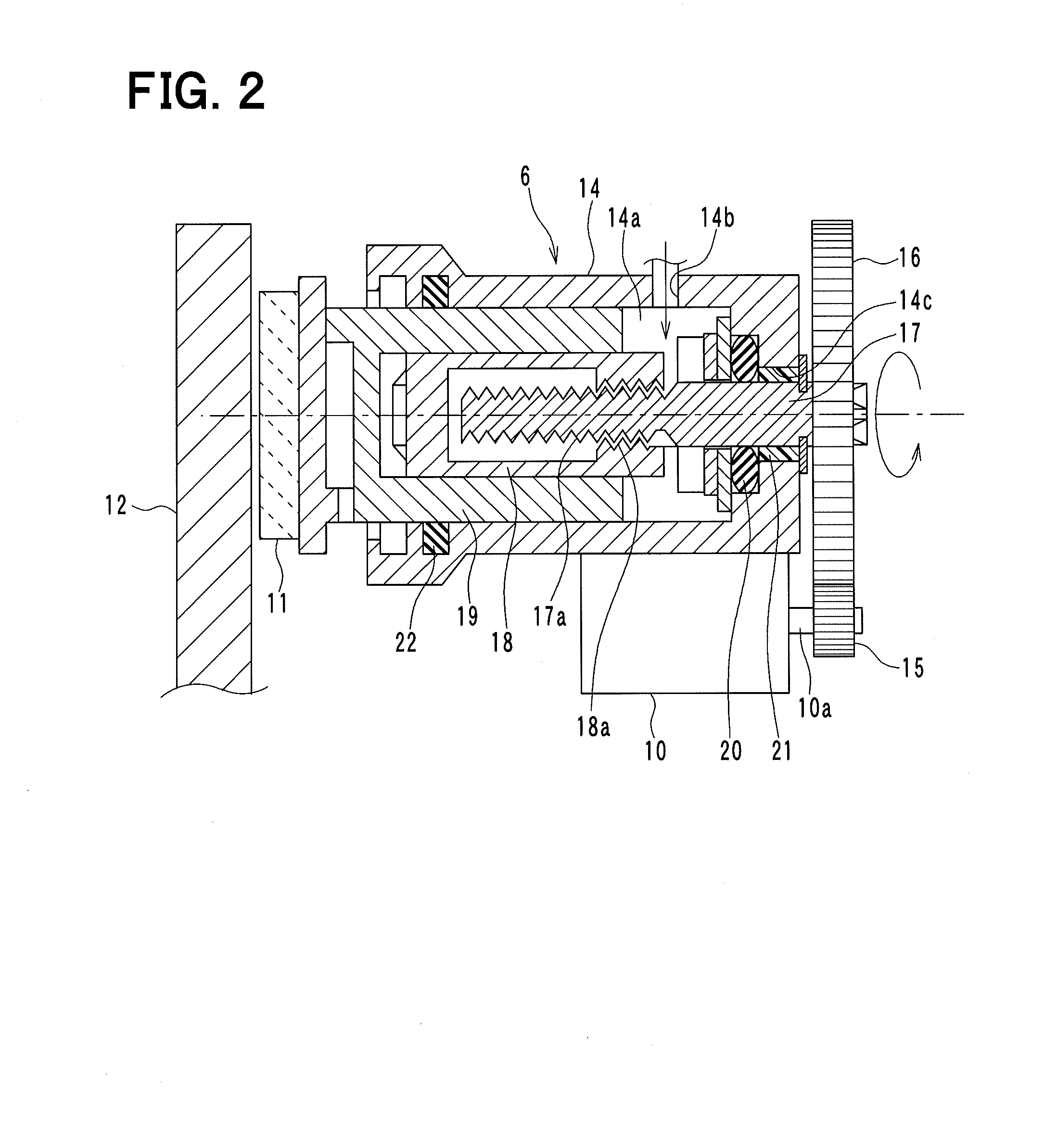Parking brake control device
a brake control and brake technology, applied in the direction of anti-theft devices, process and machine control, braking components, etc., can solve the problem of inability to perform the releasing control with good precision, and achieve the effect of preventing clearan
- Summary
- Abstract
- Description
- Claims
- Application Information
AI Technical Summary
Benefits of technology
Problems solved by technology
Method used
Image
Examples
first embodiment
[0035]A first embodiment of the present invention will be explained. The present embodiment uses as an example a vehicle brake system in which a disc brake type EPB is applied to a rear wheel. FIG. 1 is a schematic figure that shows an overall configuration of the vehicle brake system to which a parking brake control device according to the present embodiment is applied. FIG. 2 is a schematic section view of a rear wheel brake mechanism that is provided in the brake system. The present embodiment will be explained with reference to these drawings.
[0036]As shown in FIG. 1, the brake system is provided with a service brake 1 that generates a braking force based on a pedal force of a driver and with an EPB 2 for restricting the movement of the vehicle when it is parked.
[0037]For the service brake 1, the pedal force, which corresponds to the extent to which the driver depresses a brake pedal 3, is multiplied by a servo unit 4. A brake fluid pressure that corresponds to the multiplied pe...
second embodiment
[0082]A second embodiment of the present invention will be explained. In the present embodiment, the configuration of the brake system and the method of the releasing control processing are modified from what they were in the first embodiment, but the present embodiment is otherwise the same as the first embodiment, so only the portions that are different from the first embodiment will be explained.
[0083]In a case where the braking force is generated only by the EPB 2, it is acceptable to take into consideration the braking force of only the EPB 2, as in the first embodiment, but in a case where the braking force is generated by the driver's depressing of the brake pedal 3, it is preferable for the effect of the driver's depressing of the brake pedal 3 to be taken into account in the performing of the releasing control. Accordingly, in the present embodiment, the releasing control that is performed is also compatible with a case in which the driver is depressing the brake pedal 3.
[0...
PUM
 Login to View More
Login to View More Abstract
Description
Claims
Application Information
 Login to View More
Login to View More - R&D
- Intellectual Property
- Life Sciences
- Materials
- Tech Scout
- Unparalleled Data Quality
- Higher Quality Content
- 60% Fewer Hallucinations
Browse by: Latest US Patents, China's latest patents, Technical Efficacy Thesaurus, Application Domain, Technology Topic, Popular Technical Reports.
© 2025 PatSnap. All rights reserved.Legal|Privacy policy|Modern Slavery Act Transparency Statement|Sitemap|About US| Contact US: help@patsnap.com



